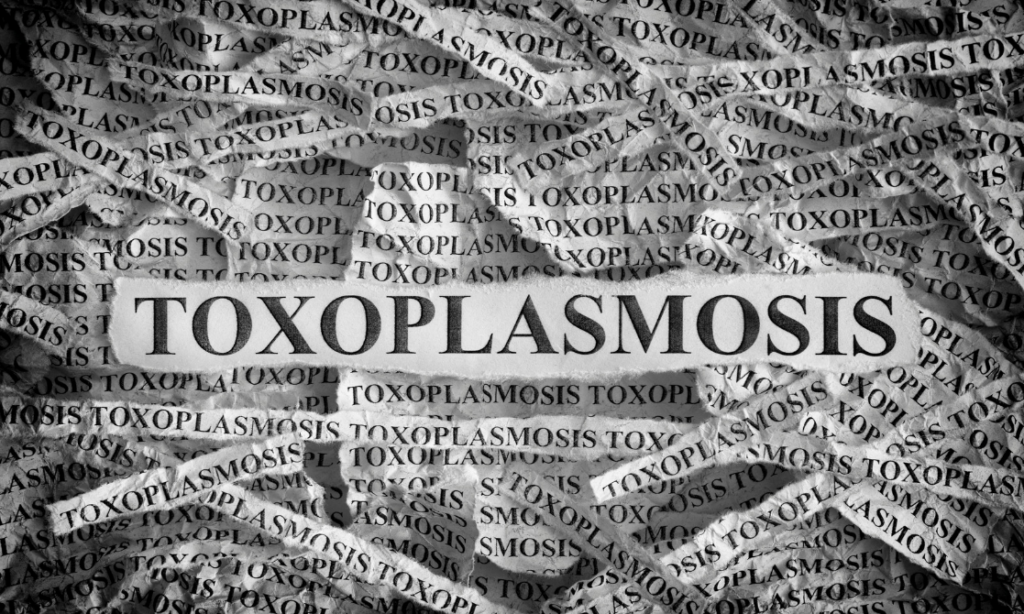Toxoplasmosis is a brain parasite that can lead to significant disease and even death. It is considered the second leading cause of foodborne-related death in the United States. The parasite is particularly dangerous during pregnancy, as it can lead to miscarriages, blindness, and developmental delays. In addition, it can impair cognitive function in adults, increasing the risk of traffic accidents and potentially being associated with certain psychiatric disorders. Toxoplasmosis can be contracted through contact with cat feces or by consuming raw or undercooked meat. While the infection risk from a single serving of meat is small, it is important to be aware of the risks and take preventive measures. This article explores the various risks and provides recommendations for preventing toxoplasmosis.
Risks of contracting toxoplasmosis
Toxoplasmosis is a brain parasite that poses considerable risks to human health. It is responsible for morbidity and mortality in the United States, making it an important public health concern. The parasite ranks as the second leading cause of foodborne-related death in the country, following Salmonella.
One of the most significant impacts of toxoplasmosis is seen during pregnancy. The parasite can invade the placenta and cause severe complications, such as miscarriages, blindness, and developmental delays. Pregnant women who become infected with toxoplasma are at a particularly high risk, which further emphasizes the need for prevention strategies.
Another concerning aspect of toxoplasmosis is its effect on cognitive function in adults. Research has shown that infection with toxoplasma can impair cognitive function, potentially leading to increased risk of accidents and other cognitive-related issues. Moreover, multiple studies have found associations between chronic toxoplasmosis and certain psychiatric disorders in humans. This suggests that the parasite may have a role in the development or progression of these conditions.
There is also evidence suggesting a potential link between toxoplasmosis and leukemia. While more research is needed to establish a definitive connection, studies have found an increased risk of developing leukemia in individuals with a history of toxoplasma infection. This highlights the importance of understanding and addressing the risks associated with the parasite.

Prevalence of toxoplasmosis as a cause of foodborne-related death
Toxoplasmosis ranks second as the leading cause of foodborne-related death in the United States, after Salmonella. The parasite poses a significant risk to public health, and understanding its prevalence is crucial for effective prevention and intervention strategies.
Effects of toxoplasma infection during pregnancy
Infection with toxoplasma during pregnancy can have severe consequences for both the mother and the developing fetus. The parasite can easily cross the placenta, leading to miscarriages, blindness, and developmental delays. Pregnant women need to be aware of the potential risks and take appropriate measures to prevent infection.
Impairment of cognitive function in adults infected with toxoplasma
Studies have shown that adults infected with toxoplasma may experience impairments in cognitive function. This can have wide-ranging effects, from decreased performance in daily activities to an increased risk of accidents. Understanding the impact of toxoplasma infection on cognitive function is crucial for developing interventions to mitigate these risks.

Association between chronic toxoplasmosis and psychiatric disorders
Multiple lines of evidence indicate that chronic infections caused by toxoplasma are likely associated with certain psychiatric disorders in humans. The parasite’s presence in the brain can potentially contribute to the development or exacerbation of these conditions. Further research is needed to better understand the underlying mechanisms and develop targeted interventions.
Potential link between toxoplasmosis and leukemia
While the connection between toxoplasmosis and leukemia is still being explored, studies have found an increased risk of developing leukemia in individuals with a history of toxoplasma infection. This highlights the need for further research to establish a definitive link and develop appropriate prevention and treatment strategies.
Prevention of toxoplasma infection through meat consumption
Toxoplasma can be contracted through the consumption of infected meat. The parasite can invade the muscles of infected animals, making meat a potential source of infection. It is important to take precautions when handling and consuming meat to minimize the risk of toxoplasma infection.
Prevention of toxoplasma infection through contact with cat feces
Contact with cat feces is another common route of toxoplasma infection. The parasite can be found in the feces of infected cats and can contaminate the environment. It is crucial to practice good hygiene, especially when handling cat litter or gardening, to reduce the risk of exposure.
Risk of infection from stray or feral cats
Stray or feral cats can pose a higher risk of toxoplasma infection due to their outdoor exposure and hunting behavior. Up to 6% of these cats may be actively infected at any given time. It is important to be aware of the potential risks when encountering stray or feral cats and take appropriate precautions.
Awareness of the risk of foodborne infection
While many people are aware of the risk of toxoplasma infection from contact with cat litter, awareness of the risk from foodborne infection may be lower. It is important to educate the public about the potential risks associated with consuming undercooked or raw meat and promote safe food handling practices.
Identification of riskiest types of meat for toxoplasma infection
Not all meats pose the same level of risk for toxoplasma infection. While cattle are not considered important hosts for the parasite, pigs, poultry, sheep, and goats have a higher prevalence of infection. It is important to be aware of the specific risks associated with different types of meat and take appropriate precautions during food preparation.
Lack of danger of infection from indoor cats
Contrary to common belief, indoor cats that do not hunt or are not fed raw meat are not likely to acquire Toxoplasma gondii infection. The danger of infection exists only when the animal is actively shedding the parasite. This provides reassurance for cat owners who keep their cats indoors and follow proper hygiene practices.
Prevalence of active infection in stray or outdoor cats
Stray or outdoor cats may have a higher prevalence of active toxoplasma infection compared to indoor cats. Up to 6% of stray cats or those with outdoor access may be actively shedding the parasite at any given time. It is essential to be cautious when coming into contact with these cats to minimize the risk of infection.
Duration of oocyst shedding in cats
Cats infected with toxoplasma shed the parasite through their feces in the form of oocysts. However, the duration of oocyst shedding is limited, typically lasting for a few weeks. It is crucial to be aware of this timeline and take appropriate precautions during this period to reduce the risk of transmission.
Safety of adopting a cat from a shelter
Adopting a cat from a shelter is generally safe in terms of toxoplasma infection risk. As long as the cat has not recently gone outside or been exposed to the parasite, the risk of infection is minimal. It is important to follow good hygiene practices and consult with shelter staff for guidance on ensuring the cat’s health and safety.
Lack of awareness about the risk of foodborne infection
Many individuals may be aware of the connection between toxoplasmosis and contact with cat feces but may have limited knowledge about the risk of foodborne infection. Raising awareness about the potential risks associated with consuming undercooked or raw meat is crucial for promoting safe food practices and reducing the incidence of infection.
Hygienic measures to prevent infection
Practicing good hygiene is essential in preventing toxoplasma infection. This includes washing hands thoroughly after handling raw meat, gardening (where cats may have defecated), or changing cat litter. By following simple hygienic measures, individuals can reduce the risk of exposure to the parasite and protect their health.
Higher risk of infection in organically raised animals
Research has shown that the prevalence of toxoplasma infection may be higher in organically raised animals compared to conventionally reared animals. This increased risk is likely due to the outdoor access granted to organically raised animals, increasing their exposure to potential sources of infection. It is important to be mindful of this risk when consuming organic meat.
Reason for higher number of cases attributed to pork consumption
One interesting observation is the higher number of cases attributed to pork consumption compared to other meats. This is not because pigs are more affected by toxoplasmosis but rather due to the higher consumption of pork chops compared to other types of meat in the United States. This highlights the importance of understanding the specific risks associated with different meats and adopting safe cooking practices.
Undercooking of pork and poultry in the United States
Surprisingly, a significant proportion of Americans undercook pork and poultry, putting themselves at risk of toxoplasma infection. Ensuring proper cooking temperatures is crucial for killing any potential parasites present in the meat. It is important to educate the public about the importance of safe cooking practices to reduce the risk of infection.
Prevalence of undercooked meat consumption
Approximately one in three Americans may undercook meat, including pork and poultry. This is concerning as undercooked meat can harbor toxoplasma parasites, among other pathogens. Addressing this lack of awareness and promoting safe cooking practices are essential for reducing the incidence of foodborne infections.
Limitations of current meat inspection in detecting toxoplasma parasites
Current meat inspection practices at slaughterhouses have limitations in detecting the presence of Toxoplasma gondii parasites in meat products. While tests exist to detect the parasites, they are not widely implemented in meat inspection. This highlights the need for improved detection methods and more comprehensive testing to ensure meat safety.
Low risk of infection from a single serving of meat
Although the risk of toxoplasma infection exists through meat consumption, the chances of infection from a single serving of meat are very low. Studies have estimated the probability of infection per serving of lamb, for example, to be around 1 in 67,000. While it is important to follow safe food practices, it is reassuring to know that the risk from a single serving is minimal.

Accelerated cognitive decline in individuals with toxoplasma infection
One of the long-term consequences of toxoplasma infection is accelerated cognitive decline in older adults. Studies have shown that individuals infected with toxoplasma experience a more rapid decline in executive function and overall mental status over time. Recognizing this impact is crucial for implementing interventions to support cognitive health in infected individuals.
Impact of infection on executive function and overall mental status
Toxoplasma infection can have a negative impact on executive function and overall mental status. Infected individuals may experience difficulties in cognitive processes such as decision-making, problem-solving, and memory. These impairments can significantly impact daily functioning and quality of life. Understanding the specific cognitive effects of toxoplasma infection is essential for providing appropriate support and interventions.
Association between reduced folate availability and cognitive decline
Reduced folate availability has been associated with cognitive decline, and there may be a link between folate levels and toxoplasma infection. Research suggests that Toxoplasma gondii may harvest folate from host neural cells, further affecting cognitive functioning. Maintaining adequate folate levels through a balanced diet is important for overall cognitive health and may have implications for individuals infected with toxoplasma.

Potential role of toxoplasma in harvesting folate from neural cells
One intriguing aspect of toxoplasma infection is its potential role in harvesting folate from neural cells. Folate is essential for various cognitive processes, and its depletion may have significant consequences for cognitive health. Understanding the mechanisms behind the interaction between toxoplasma infection and folate availability is vital for developing targeted interventions and preventing cognitive decline.
In conclusion, toxoplasmosis poses significant risks to public health, with implications for morbidity, mortality, and cognitive function. Preventive measures, such as safe handling and cooking of meat, hygienic practices, and awareness of the risks associated with toxoplasma infection, play a crucial role in reducing the incidence and impact of this parasite. Further research is needed to better understand the complexities of toxoplasmosis and develop effective strategies for prevention and intervention. By addressing the risks of toxoplasmosis comprehensively, we can protect individuals from potential harm and promote overall health and well-being.

